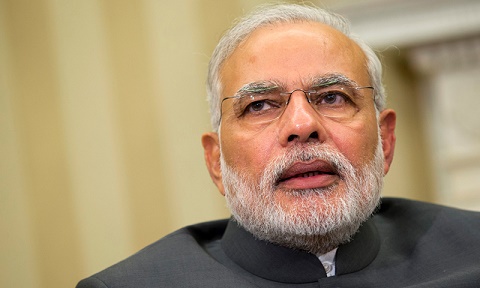India’s emergence as the most dynamic economy worldwide is largely dependent upon implementation of new reforms. IMF chief Christine Lagarde, admired the measures adopted by the government to stimulate the economy. The JAM trinity that includes Jan Dhan Yojana, Aadhar Card policy and Mobile numbers is a crucial step towards subsidy regime. India is reviving on the back of positive policies that steered public confidence and sinking world crude oil prices. However, India is required to take important steps to revitalize the investments and stimulate structural reforms across the nation. These projections are based on high expectations from Indian Prime Minister Narendra Modi, who took office charge after winning the general elections held in May-14.
The steep fall in oil prices are likely to ease India’s current account deficit and thus stimulate GDP growth in the short term. Moreover, global factors also turned positive for the Indian economy. The current declining trend of world oil prices coupled with ongoing recovery in the US economy, will stimulate the Indian economy. Cheaper oil is a great boon for energy intensive Indian economy which is largely dependent upon oil imports, thereby leaving large capital in the hands of the government for investment in infrastructure and other growth projects. The forecast revision took place after considering the revised methodology implemented by India for GDP calculation.
Further, RBI’s unexpected move of cutting its repo rate two times in 2015 so far to 7.5% is likely to boost liquidity to support growth. The reduction in interest rates will leave more money in the hands of consumers for discretionary spending, which in turn will boost the consumption sector. Also, banking and financial services which is an interest sensitive sector will derive huge benefits from lower cost of funds.
The policy implementation stepped up by privatization of coal industry, labor reforms, deregulation of diesel prices, allowance of FDI in railway and defense sectors and ease in FDI rules for construction sectors. Most notably, “Make in India” is one of the most concrete steps in order to boost India’s GDP. With the aim to achieve 25% contribution from the manufacturing sector over next 4-5 years, the policy will enhance India’s manufacturing competitiveness across the globe.
Moreover, the steep decline in crude oil prices and slide in gold imports have facilitated easing of the current account deficit. Inflation, the biggest hindrance for the Indian economy over past couple of years is now believed to be under control, mainly due to collapse in oil prices. The speeding up of new investment plans specifically in the power and transport sectors, will facilitate boosting the economy’s financial sector. Despite brighter economic outlook, the economy is exposed to risks on both foreign as well as domestic fronts. The country’s internal risk is primarily the weak supply side of the economy due to dearth of proper infrastructure, power generation and improper transport facilities. Moreover, India is also subject to the effect of uncertain global financial scenario.
The steep fall in oil prices are likely to ease India’s current account deficit and thus stimulate GDP growth in the short term. Moreover, global factors also turned positive for the Indian economy. The current declining trend of world oil prices coupled with ongoing recovery in the US economy, will stimulate the Indian economy. Cheaper oil is a great boon for energy intensive Indian economy which is largely dependent upon oil imports, thereby leaving large capital in the hands of the government for investment in infrastructure and other growth projects. The forecast revision took place after considering the revised methodology implemented by India for GDP calculation.
Further, RBI’s unexpected move of cutting its repo rate two times in 2015 so far to 7.5% is likely to boost liquidity to support growth. The reduction in interest rates will leave more money in the hands of consumers for discretionary spending, which in turn will boost the consumption sector. Also, banking and financial services which is an interest sensitive sector will derive huge benefits from lower cost of funds.
The policy implementation stepped up by privatization of coal industry, labor reforms, deregulation of diesel prices, allowance of FDI in railway and defense sectors and ease in FDI rules for construction sectors. Most notably, “Make in India” is one of the most concrete steps in order to boost India’s GDP. With the aim to achieve 25% contribution from the manufacturing sector over next 4-5 years, the policy will enhance India’s manufacturing competitiveness across the globe.
Moreover, the steep decline in crude oil prices and slide in gold imports have facilitated easing of the current account deficit. Inflation, the biggest hindrance for the Indian economy over past couple of years is now believed to be under control, mainly due to collapse in oil prices. The speeding up of new investment plans specifically in the power and transport sectors, will facilitate boosting the economy’s financial sector. Despite brighter economic outlook, the economy is exposed to risks on both foreign as well as domestic fronts. The country’s internal risk is primarily the weak supply side of the economy due to dearth of proper infrastructure, power generation and improper transport facilities. Moreover, India is also subject to the effect of uncertain global financial scenario.





